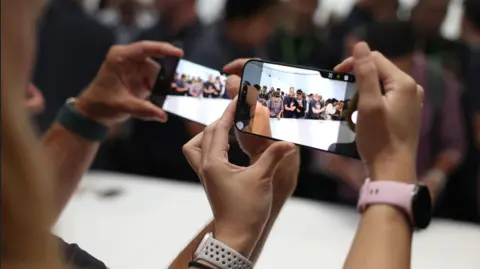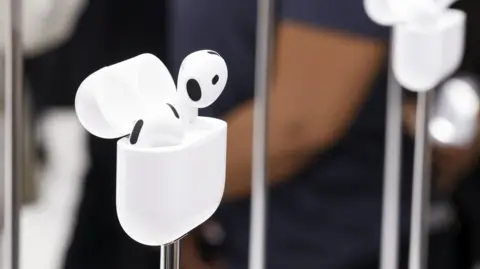Sci-Tech
Umbrella Academy Season 3 Catch-Up Ahead of Season 4

June 2022 was a long time ago, but it might feel even longer for Umbrella Academy fans who binged season three in a couple of sittings and then moved on to other pop-culture obsessions. The show is a lot of fun and season three was killer—but it’s been over two years since the Netflix series dropped new episodes. Are you ready to dive into its fourth and final season?
We’ve already peeked at the “previously on” montage that kicks off season four, and frankly, it didn’t clear all that much up. So here’s a crash course in what you need to remember going into season four, which runs just six episodes and premieres August 8 on Netflix.
What happened in season 3 of Umbrella Academy?

When Umbrella Academy—based loosely on the Gerard Way-Gabriel Bá Dark Horse Comic series about the super-powered and dysfunctional adopted Hargreeves siblings—kicked off its third season, the main characters were bouncing back from averting an apocalypse at the end of season two. (They did that in season one too.) Season two involved a lot of time travel, and it ended with the characters in 2019—but in an alternate reality where the Umbrella Academy, here called “the Sparrow Academy,” had mostly different members. One is a still-alive version of their deceased sibling, Ben (Justin H. Min).
There’s instant hostility, and the Umbrella kids decamp to the quirky Hotel Obsidian. There are fights between the factions (and between the siblings), but also occasional outbursts of teamwork—and even a romance between Umbrella Luther (Tom Hopper) and Sparrow Sloane (Genesis Rodriguez). Throughout the season, characters grapple with the fallout of their time travel, both on a personal level (problematically, all of the Umbrella kids’ mothers died before they were born in this particular timeline) and on a more “the universe is freaking out due to all the anomalies” level, thanks to a powerful Kugelblitz in their midst.
Notably, Umbrella Academy season three addressed leading actor Elliot Page’s coming out as a trangender man by simply having his character, Viktor, follow the same path; it was handled seamlessly within the story. The season also saw Klaus (Robert Sheehan) dying and returning to life, repeatedly; Five (Aidan Gallagher) meeting an older version of himself; Allison (Emmy Raver-Lampman) nearly succumbing to the grief of losing her daughter from the season two time-travel story; and Lila (Ritu Arya) and Diego (David Castañeda) almost figuring out how to be co-parents.
Throughout the season, there’s a growing sense that Umbrella/Sparrow patriarch Sir Reginald Hargreeves (Colm Feore)—who’s actually an extraterrestrial being of unknown age from another dimension—is up to no good, even more than usual. It’s all tied into the Hotel Obsidian, the setting for Luther and Sloane’s wedding and where all the surviving characters gather as the Kugelblitz begins decimating reality around them.
What happened at the end of Umbrella Academy season 3?

Reginald revealed that the Hotel Obsidian is really a machine in another dimension, built by whoever created the universe, and couching a portal that will reset that universe; there’s a mirror-image hotel called the Hotel Oblivion on the other side. The Hargreeves have to work together to figure out the machine’s elaborate puzzle, which (in typical fashion) is a trying task. At last, though, Allison manages to seemingly kill Reginald, who’s draining the super-powered life force from his “children” to power the machine, and start the reset process.
At the very end of season three, we see that Allison’s daughter and her husband from season two are alive—as is Reginald, along with his long-deceased wife Abigail, who are bigwigs in this brand-new timeline. While other characters are restored to health (Five, who’d lost an arm along the way, is now healed), Luther is distraught to realize that Sloane, his new wife, is missing. Also: nobody has their superpowers anymore. Most are totally freaked out, and all scamper in different directions. In a mid-credits scene, we see Ben—the only remaining Sparrow—on a train in South Korea—perhaps the same train where he was shown being born in a flashback at the start of season three.
What’s season 4 of Umbrella Academy going to be about?

Here’s the word from Netflix: “The Hargreeves siblings have scattered after the climactic showdown at the Hotel Oblivion led to a complete reset of their timeline. Stripped of their powers, each is left to fend for themselves and find a new normal—with wildly varying degrees of success. Yet the trappings of their uncanny new world prove too hard to ignore for very long. Their father Reginald, alive and well, has stepped out of the shadows and into the public eye, overseeing a powerful and nefarious business empire.
A mysterious association known as the Keepers holds clandestine meetings believing the reality they’re living in is a lie and a great reckoning is coming. As these strange new forces conspire around them, the Umbrella Academy must come together one last time—and risk upsetting the shaky peace they’ve all endured so much to secure—to finally set things right.” New characters this season will be played by Nick Offerman, Megan Mullally, and David Cross.
When can I watch season 4 of Umbrella Academy?
All six episodes arrive August 8 on Netflix.
Want more io9 news? Check out when to expect the latest Marvel, Star Wars, and Star Trek releases, what’s next for the DC Universe on film and TV, and everything you need to know about the future of Doctor Who.
Sci-Tech
Apple banks on AI to boost sales of its new iPhone

 Getty Images
Getty ImagesWith business slumping, Apple has been under pressure to show what it will offer buyers to jumpstart a new wave of iPhone sales.
On Monday, the technology giant revealed its hand – the iPhone 16 which has a camera button on the outside of the handset.
The button is an external clue to the changes Apple said it had made inside its latest smartphone, aimed at harnessing the latest in artificial intelligence (AI).
Apple’s chief executive Tim Cook said the upgrades would “push the boundaries of what a smartphone can do” but the firm has tough competition, as other brands have already integrated generative AI features into their handsets.
Apple’s share price fell during its “Glowtime” event, where it unveiled the iPhone 16 as well as other products, and ended the day flat. The company, worth $3 trillion, is facing concern that it is losing its edge in the burgeoning area of artificial intelligence.
Sales of the iPhone – Apple’s most important product which accounts for around half of its total sales – have stalled in recent months. They slipped by 1% over the nine months ended 29 June compared with a year earlier.
Apple said its new phones, which come with longer lasting batteries, more powerful chips and enhanced privacy features, were its first built specifically to handle AI and its new “Apple Intelligence” tools, many of which were announced in June.
Those include new tools for writing and creating new emojis as well incorporating OpenAI’s chatbot ChatGPT into Siri to help users with some queries and text generation requests.
On Monday, Apple also announced updates to its Apple Watch and its AirPod headphones, which will allow them to automatically drop the volume when users start in-person conversations and to decline calls with the shake of a head.
It said the Pro version of its AirPods would be able to be used as a “clinical grade” personal hearing aid for people with mild or moderate hearing loss.
The company said it was expecting marketing approval from regulators for the device “soon” and the feature would be available this autumn in more than 100 countries, including the US, Germany and Japan.
Previously, the company had a feature that allowed people to pair hearing aids with iPhones and other devices.
The products were rolled out at a glossy event where protestors gathered in a designated free speech area across the street, urging executives to ramp up efforts to protect children from dangerous content in the company’s App Store.
The protest featured a life-sized blow-up made to resemble Mr Cook.
Sales of the new range start in September, with prices for the iPhone16 starting at $799.
But the Apple Intelligence features are not set to be available on operating systems until October, starting in the US and heading to other countries in the following months. They will be available in the UK in December.
Ben Wood, chief analyst at the market research firm CCS Insight, said it was likely that many people would dismiss the company’s new camera control as a “glorified shutter button”.
But he said it offered “very significant” upgrades, including visual, AI-powered search and he came away from the presentation persuaded that Apple would win over customers.
“The combination of Apple Intelligence and new camera features on the iPhone 16 will help spur upgrades from loyal Apple customers,” he said. “Particularly as Apple is positioning this latest update as being a future-proof purchase for customers wanting to get Apple Intelligence features as they roll out over the next few years.”
 EPA
EPAApple has been slower than rivals Samsung and Google to bake generative AI features for photo editing, translation and web browsing into its devices.
Competitors are now building them into folding, flipping and even tri-folding smartphones.
Pre-orders for Huawei’s new tri-fold phone, the Mate XT, reportedly hit more than three million on Monday.
Gartner analyst Annette Zimmermann said because Apple was rolling out AI-ready smartphones later than rivals, it was “critical” they deliver.
She warned that rolling the features out before they were ready could risk their reputation or prompt sales losses.
Sci-Tech
Google’s lucrative ad tech business goes on trial

The US government is taking aim at the engine of Google’s immense wealth – its extremely lucrative ad tech business.
A trial beginning on Monday will hear the Department of Justice’s case that the search engine’s parent company Alphabet illegally operates a monopoly in the market.
The company earned more than $200 billion (£152bn) last year through the placing and selling of ads seen by internet users.
Alphabet has argued its success is due to the “effectiveness” of its services – but prosecutors say it has used its market dominance to stifle rivals.
“It is a really important industry that grabs billions of consumer dollars every year,” said Laura Phillips-Sawyer, a professor at the University of Georgia School of Law.
“I think all consumers have an interest in this litigation.”
It is the second major antitrust case the tech giant has faced in the US.
In August a judge ruled its dominance of search was illegal, with the penalties Google and Alphabet will face as a result of that decision so far unclear.
According to the lawsuit filed by the Department of Justice (DoJ) and a coalition of states in 2023, Google dominates the digital ad marketplace and has leveraged its market power to stifle innovation and competition.
Google meanwhile contends it is just one of several hundred companies that facilitate the placement of digital ads in front of consumers.
It argues that competition in the digital ad space is growing, not contracting – citing increased ad growth and revenues for companies such as Apple, Amazon and TikTok as proof in a blog post responding to the DoJ’s lawsuit in 2023.
Both sides will present their cases to US District Judge Leonie Brinkema, who is expected to deliver a verdict.
The bench trial comes on the heels of a landmark decision last month in a different monopoly case brought by the Justice Department against Google.
Judge Amit Mehta ruled that Google acted illegally to squelch competition in its online search business.
“Google is a monopolist, and it has acted as one to maintain its monopoly,” he wrote.
During last year’s trial, Google said it dominated online search because it had a better product.
And the company is seemingly deploying a similar defence in the ad tech case.
When asked for a statement, it referred the BBC to its 2023 blog post, in which it states that “no-one is forced to use our advertising technologies – they choose to use them because they’re effective.”
Judge Mehta held a status conference on Friday as he begins the process of deciding on remedies for Google’s conduct.
“The DoJ clearly had a big win, and they’re going to ride that momentum,” Dan Ives, managing director at Wedbush Securities, told the BBC.
He said he expects those remedies to involve “business model tweaks, not a breakup” of the company.
Meanwhile, in Justice Brinkema’s courtroom, the arcane process that governs advertising technology could make the DoJ’s attempts to prove its case an uphill climb.
“We all use search. We all intuitively understand that product,” said Rebecca Haw Allensworth, an antitrust professor at Vanderbilt University Law School.
By comparison, advertising technology is “so complex that I think that’s going to be a real challenge for the government to make a clear, simple monopolisation argument here.”
The US is not the only country where regulators are unhappy with Google’s ad tech business.
On Friday, the UK Competition and Markets Authority said it believed Google was abusing its dominance in the ad tech industry, according to the findings of its initial investigation.
It said it found that Google used anti-competitive practices to dominate the market for online advertising technology – and the potentially unlawful behaviour could be harming thousands of UK publishers and advertisers.
A Google representative said the decision was based on a “flawed” understanding of the ad tech sector.
Sci-Tech
Thieves snatched his phone in London

 Akara Etteh
Akara EttehEarly on a Saturday morning in April, Akara Etteh was checking his phone as he came out of Holborn tube station, in central London.
A moment later, it was in the hand of a thief on the back of an electric bike – Akara gave chase, but they got away.
He is just one victim of an estimated 78,000 “snatch thefts” in England and Wales in the year to March, a big increase on the previous 12 months.
The prosecution rate for this offence is very low – the police say they are targeting the criminals responsible but cannot “arrest their way out of the problem”. They also say manufacturers and tech firms have a bigger role to play.
Victims of the crime have been telling the BBC of the impact it has had on them – ranging from losing irreplaceable photos to having tens of thousands of pounds stolen.
And for Akara, like many other people who have their phone taken, there was another frustration: he was able to track where his device went, but was powerless to get it back.
Phone pings around London
He put his iPhone 13 into lost mode when he got home an hour or so later – meaning the thieves couldn’t access its contents – and turned on the Find My iPhone feature using his laptop.
This allowed Akara to track his phone’s rough location and almost immediately he received a notification to say it was in Islington. Eight days later, the phone was pinging in different locations around north London again.
In a move says he “wouldn’t recommend” with hindsight, he went to two of the locations his phone had been in to “look around”.
“It was pretty risky,” he said. “I was fuelled by adrenaline and anger.”

He didn’t speak to anyone, but he felt he was being watched and went home.
“I am really angry,” he said. “The phone is expensive. We work hard to earn that money, to be able to buy the handset, and someone else says ‘screw that’.”
Then, in May, just over a month after the theft, Akara checked Find My iPhone again – his prized possession was now on the other side of the world – in Shenzhen, China.
Akara gave up.
It is not uncommon for stolen phones to end up in Shenzhen – where if devices can’t be unlocked and used again, they are disassembled for parts.
The city is home to 17.6 million people and is a big tech hub, sometimes referred to as China’s Silicon Valley.
Police could not help
In the moments after Akara’s phone was stolen, he saw police officers on the street and he told them what had happened. Officers, he said, were aware of thieves doing a “loop of the area” to steal phones, and he was encouraged to report the offence online, which he did.
A few days later, he was told by the Metropolitan Police via email the case was closed as “it is unlikely that we will be able to identify those responsible”.
Akara subsequently submitted the pictures and information he had gathered from the locations where his stolen phone had been. The police acknowledged receipt but took no further action.
The Metropolitan Police had no comment to make on Akara’s specific case, but said it was “targeting resources to hotspot areas, such as Westminster, Lambeth and Newham, with increased patrols and plain clothes officers which deter criminals and make officers more visibly available to members of the community”.
Lost photos of mum
Many other people have contacted the BBC with their experiences of having their phones taken. One, James O’Sullivan, 44, from Surrey, says he lost more than £25,000 when thieves used his stolen device’s Apple Pay service.
Meanwhile, Katie Ashworth, from Newcastle, explained her phone was snatched in a park along with her watch, and a debit card in the phone case.
“The saddest thing was that the phone contained the last photos I had of my mum on a walk before she got too unwell to really do anything – I would do anything to get those photos back,” the 36-year-old says.
Again, she says, there was a lack of action from the police.
“The police never even followed it up with me, despite my bank transactions showing exactly where the thieves went,” she said.
“The police just told me to check Facebook Marketplace and local second-hand shops like Cex.”
‘Battle against the clock’ for police
So why are the police seemingly unable to combat this offence – or recover stolen devices?
PC Mat Evans, who has led a team working on this kind of crime for over a decade within West Midlands Police, admitted that only “quite a low number” of phones that are stolen actually get recovered.
He says the problem is the speed with which criminals move.
“Phones will be offloaded to known fences within a couple of hours,” he said.
“It’s always a battle against the clock immediately following any of these crimes, but people should always report these things to the police, because if we don’t know that these crimes are taking place, we can’t investigate them.”
And sometimes just one arrest can make a difference.
“When we do catch these criminals, either in the act or after the fact, our crime rates tank,” he said.
“Quite often that individual has been responsible for a huge swathe of crime.”
But the problem is not just about policing.
In a statement, Commander Richard Smith from the National Police Chiefs’ Council, which brings together senior officers to help develop policing strategy, said it would “continue to target” the most prolific criminals.
“We know that we cannot arrest our way out of this problem,” he said.
“Manufacturers and the tech industry have an important role in reducing opportunities for criminals to benefit from the resale of stolen handsets.”
Tracking and disabling
 PC Mat Evans
PC Mat EvansStolen phones can already be tracked and have their data erased through services such as “Find My iPhone” and “Find My Device”, from Android.
But policing minister Dame Diana Johnson said this week the government wanted manufacturers to ensure that any stolen phone could be permanently disabled to prevent it being sold second-hand.
Police chiefs will also be tasked with gathering more intelligence on who is stealing phones and where stolen devices end up.
A growing demand for second-hand phones, both in the UK and abroad, is believed to be a major driver behind the recent rise in thefts, the government said.
The Home Office is to host a summit at which tech companies and phone manufacturers will be asked to consider innovations that could help stop phones being traded illegally.
PC Evans said there was “no magic bullet”, but he said there was one thing manufacturers could do which would be “enormously helpful” to the police – more accurate tracking.
“At this moment in time, phone tracking is okay,” he said.
“But it’s not that scene in Total Recall yet, where you’re able to run around with a tracking device in your hand, sprinting down the road after a little bleeping dot.
“I appreciate it’s a big ask from the phone companies to make that a thing, but that would be enormously helpful from a policing perspective.”
Apple and Android did not provide the BBC with a statement, but Samsung said it was “working closely with key stakeholders and authorities on the issue of mobile phone theft and related crimes”.
Additional reporting by Tom Singleton
-

 African History5 years ago
African History5 years agoA Closer Look: Afro-Mexicans 🇲🇽
-

 African History8 months ago
African History8 months agoBlack History Facts I had to Learn on My Own pt.6 📜
-

 African History5 years ago
African History5 years agoA Closer Look: Afro-Mexicans 🇲🇽
-

 African History1 year ago
African History1 year agoMajor African Tribes taken away during the Atlantic Slave Trade🌍 #slavetrade #africanamericanhistory
-

 African History1 year ago
African History1 year agoCameroon 🇨🇲 World Cup History (1962-2022) #football #realmadrid #shorts
-

 African History1 year ago
African History1 year agoWhat did Columbus Find in 1493? 🤯🔥🔥 #history #civilization #mesoamerica #africa #kemet
-

 African History7 months ago
African History7 months agoBlack History Inventors: Mary Kenner 🩸
-

 African History1 year ago
African History1 year agoOrigin Of ‘Cameroon’ 🇨🇲😳#africa



































